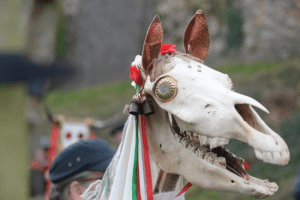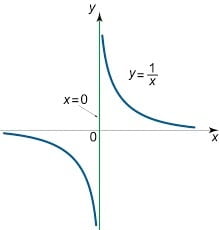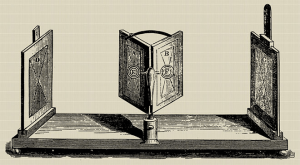
Celebrating Mari Lwyd in Wales.
With Christmas just around the corner (well, sort of), most of us are getting into the holiday season. However, millions of people celebrate their own holiday traditions, ranging from a KFC-Day in Japan and a day to burn trash on the streets in Guatemala. As you may learn in this article, not all holiday traditions are centered around jolly old men.
- Noche de Rabanos, Mexico
Literally translating to “Night of the Radishes”, this festival is Mexico’s version of America’s pumpkin carving tradition. Noche de Rabanos began with merchants carving designs on radishes in hopes of attracting customers to their shops. The townspeople loved it- they would use the radishes as Christmas centerpieces. In 1897, the mayor of the city declared December 23rd as the Night of the Radishes, and it has stuck ever since.
- The Yule Cat, Iceland
Though cats are usually viewed as cute and docile, the Yule Cat (or Jólakötturinn) is anything but. This giant kitty eats all the children who misbehave. As per Icelandic tradition, children who behave well will receive new clothes for Christmas, but those who don’t must face the wrath of the murderous Yule Cat. This particular feline is larger than a house, and is rumored to peer into the windows of houses to search for socks. If the Yule Cat is unable to find new clothes, it will simply devour the child who couldn’t earn their socks.
- Krampus, Austria
This Austrian tradition has a similar concept to the aforementioned Yule Cat. It involves jolly old Saint Nicholas’ not so friendly assistant, known as the Krampus. His name originates from the German word krampen, which means claw. The Krampus has a demented face, knotted fur, and two goat horns poking out of his head. This hideous creature is known for lugging around a sack. The children who misbehave are shoved into the bag and brought back to his lair, where they are presumably eaten. The luckier ones are simply beaten with dead branches and are left at that.
- Mari Lwyd, Wales
Ever head of caroling with dead horses? In Wales, one may find a horse skull on a stick waiting for them outside their house. This figure is decorated with bells and ribbons, and a white cloth is draped over the person carrying it to give a ghostly appearance to the peculiar figure. This “horse” even has a name- Mari Lwyd. Typically, once Mari Lwyd appears on your doorstep, she will challenge you to a rhyming battle. Only after you compete in the poetry battle are you allowed to earn food and drink.
- El Caganer, Spain
Forget Elf on the Shelf. Spain’s take on the well-known tradition involves small figurines with their pulled down pants around their ankles. This seemingly obscure practice dates back to the 18th century, when, in Catalonia, caganers represented good harvest and fortune. The traditional caganer is a squatting peasant with a red hat, but newer versions involve famous figures like Barack Obama, Pope Francis, and Albert Einstein.
Works Cited
Billock, Jennifer. “The Origin of Krampus, Europe’s Evil Twist on Santa.” Smithsonian.com, Smithsonian Institution, 4 Dec. 2015, www.smithsonianmag.com/travel/krampus-could-come-you-holiday-season-
















